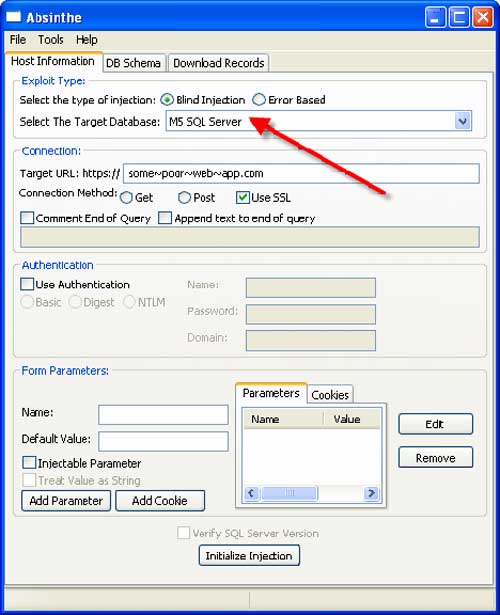
If you can afford it, go with an automated scanner. They won't detect advanced techniques and are somewhat tedious to use. First, a word of caution: the tests I describe only look for basic SQL Injection flaws.
#SQL INJECTION TOOL GOOGLE CHROME MANUAL#
Manual SQL Injection TestsWhat’s a poor application developer to do? You can actually run some basic tests to evaluate your web applications for SQL Injection vulnerabilities using nothing more than a web browser. However, they're quite expensive, running at up to $25,000 per seat. These tools all offer easy, automated ways to analyze your web applications for potential SQL Injection vulnerabilities. Automated SQL Injection ScanningOne possibility is using an automated web application vulnerability scanner, such as HP's WebInspect, IBM's AppScan or Cenzic's Hailstorm. In this article, we take a look at several ways you can test your web applications to determine whether they're vulnerable to SQL Injection attacks. For an example, see the article SQL Injection Attacks on Databases. In this type of attack, hackers manipulate a web application in an attempt to inject their own SQL commands into those issued by the database. SQL Injection attacks pose tremendous risks to web applications that depend upon a database backend to generate dynamic content.

For example, if you’re asking someone to enter a customer number, make sure the input is numeric before executing the query.
#SQL INJECTION TOOL GOOGLE CHROME CODE#
However, the same code can be a dangerous weapon in the hands of a malicious user. The following query would retrieve his results: Suppose John visits the page and enters his customer ID (14).

During a normal customer inquiry, this form works quite well. The results of this query are then displayed on the results page. When the form is submitted, the following SQL query is executed: The page itself might be a basic HTML form that contains a textbox called CustomerNumber and a submit button. Suppose Acme Widgets has a simple page for existing customers where they simply enter their customer number to retrieve all of their current order information. Let's take a look at how it works by analyzing a very simple web application that processes customer orders. If you don't believe this type of attack could happen to you. One common type of database attack, the SQL Injection, allows a malicious individual to execute arbitrary SQL code on your server. Have you also considered the security of the code that powers the database-web interface? If you're security-conscious, you've undoubtedly spent a significant amount of time setting appropriate security permissions on your databases and web servers.

The vast majority of databases in use today have some form of web interface, allowing internal and/or external users easy access through familiar browser software.


 0 kommentar(er)
0 kommentar(er)
